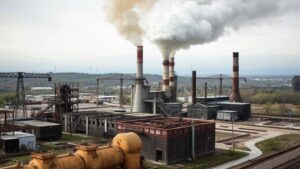Leveraging AI to Cross-Analyze Historic Mine Output Records for Hidden Riches
Leveraging AI to Cross-Analyze Historic Mine Output Records for Hidden Riches
The mining industry has long been a cornerstone of economic development, providing essential materials for various sectors. But, many historical mine outputs remain under-analyzed due to the sheer volume of data generated over decades or even centuries. Recent advancements in artificial intelligence (AI) present an opportunity to exploit these datasets for hidden riches that may have been overlooked. This article explores the methodologies for employing AI in the analysis of historical mine data, the potential benefits, and real-world applications in the mining sector.
The Importance of Historic Mine Data
Historic mine records serve as a goldmine of information, containing geological, operational, and financial data spanning decades. For example, the Comstock Lode in Nevada, an iconic mining region predating the 20th century, produced over $400 million in gold and silver by 1880. Despite the wealth extracted, substantial records remain untouched.
Analyzing this data helps mining companies understand trends, geological formations, and changes in production efficiency. But, the challenge lies in the voluminous and unstructured nature of the records, which often include handwritten notes, outdated terminology, and inconsistent data formats.
AI Technologies for Data Analysis
- Machine Learning Algorithms: These can identify patterns and anomalies within historical data that may indicate untapped reserves. For example, clustering algorithms can segregate different mining periods to find richer deposits hidden by historical extraction techniques.
- NLP (Natural Language Processing): NLP tools can process and analyze written records, extracting valuable insights that can inform strategic decisions. An example is using NLP to convert handwritten mining logs from the 1800s into structured data that can be analyzed statistically.
- Predictive Analytics: By applying predictive modeling, companies can forecast future outputs based on historical performance and changes in extraction technology.
Case Studies and Applications
Several companies have begun to implement AI-driven analyses of historical mine data, yielding promising results. One notable example is Barrick Gold, which utilized machine learning techniques to analyze over 30 years of mining data from its Goldstrike mine in Nevada. This initiative enabled them to identify previously overlooked mineral deposits, leading to a significant increase in expected reserves by 15%.
Another example includes Anglo American, which has invested in AI to analyze geological survey data from its sites all over the world. By integrating AI with geographic information systems (GIS), Anglo American is uncovering patterns that were not visible through traditional methods. As a result, theyve optimized their exploration strategy, potentially saving millions in operational costs.
Challenges and Considerations
Despite the potential benefits of AI in analyzing mine output records, several challenges remain. Data quality is a primary concern, as historical records can be incomplete or inaccurate. Companies must invest in data cleaning and verification processes before effective AI implementation. Plus, integration with existing IT systems requires careful planning and expertise to avoid disruption in ongoing operations.
Another challenge is ensuring stakeholder buy-in. Many professionals within the mining industry may resist adopting AI due to fears of job displacement or skepticism about new technology. Companies must approach AI implementation with clear communication and education efforts to illustrate the advantages.
Future Prospects
As the mining industry increasingly embraces innovation, the future of AI in analyzing historical mine data appears promising. Advancements in AI methodologies, including deep learning and advanced geospatial analysis, will continue to evolve, paving the way for new discoveries.
Also, governments and private sectors are likely to invest heavily in technological upgrades, considering the significant portion of global GDP that the mining sector represents. According to a report by the World Bank, mining accounts for approximately 1% of the global economy and is crucial for the development of many emerging nations.
Conclusion and Actionable Takeaways
Integrating AI into the analysis of historic mine output records promises an array of benefits, from identifying rich, untapped deposits to improving operational efficiency. As the technology continues to evolve, mining companies should consider the following actionable steps:
- Invest in data cleaning and validation processes to ensure high-quality datasets.
- Educate stakeholders on the benefits and functionalities of AI to facilitate a smooth transition.
- Prioritize funding for AI initiatives that specifically target the analysis of historical data.
- Collaborate with technology partners to effectively implement AI tools tailored to the mining industrys unique needs.
Ultimately, by leveraging AI, the mining sector can unlock significant hidden resources, ensuring both economic benefits and sustainable mining practices for the future.


